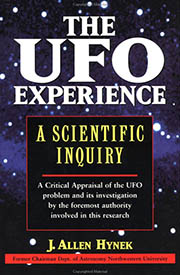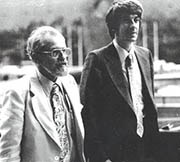UFOs: Close Encounters


The term close encounter was coined by American astronomer and ufologist Josef Allen Hynek (1910 - 1986) in his 1972 book The UFO Experience: A Scientific Inquiry. Hynek proposed three types of close encounter:
First Kind: Sighting of one or more UFOs at a distance of 500 feet lor less.
Second Kind: Sighting of a UFO with associated physical effects (e.g. heat, electrical interference, etc).
Third Kind: Sighting of an animated being (presumably an alien but not specifically defined as such).
Since Hynek's original classification several more types have been suggested, although these are not universally recognized:
Fourth Kind: Human abduction by an alien. May also include voluntary experiences.
Fifth Kind: Voluntary bilateral contact between humans and extraterrestrials.
Sixth Kind: Death of a human or animal associated with a UFO sighting. Cattle mutilations would fall into this category.
Seventh Kind: The creation of a human/alien hybrid, either by sexual reproduction or by artificial scientific methods.
In addition, ufologist Ted Bloecher has suggested seven sub-categories for close encounters of the third kind:
A: A being is witnessed inside a UFO.
B: A being is witnessed both inside and outside a UFO.
C: A being is witnessed in the vicinity of a UFO.
D: A being is observed without the presence of a UFO, but UFO activity is reported in the area around the same time.
E: As type D, but UFO activity is not reported in the area.
F: No entity or UFOs are witnessed, but the subject experiences some kind of communication.
G: Abduction (the same as a close encounter of the 4th kind).
A possible eighth sub-category:
H: An alien is injured, captured and/or killed.

Popular Culture
The phrase close encounters entered mainstream popular culture following the 1977 Steven Spielberg film Close Encounters of the Third Kind. Thanks to this film, most adults in the western world associate the phrase with alien encounters, even if few people can actually define the encounter types.
